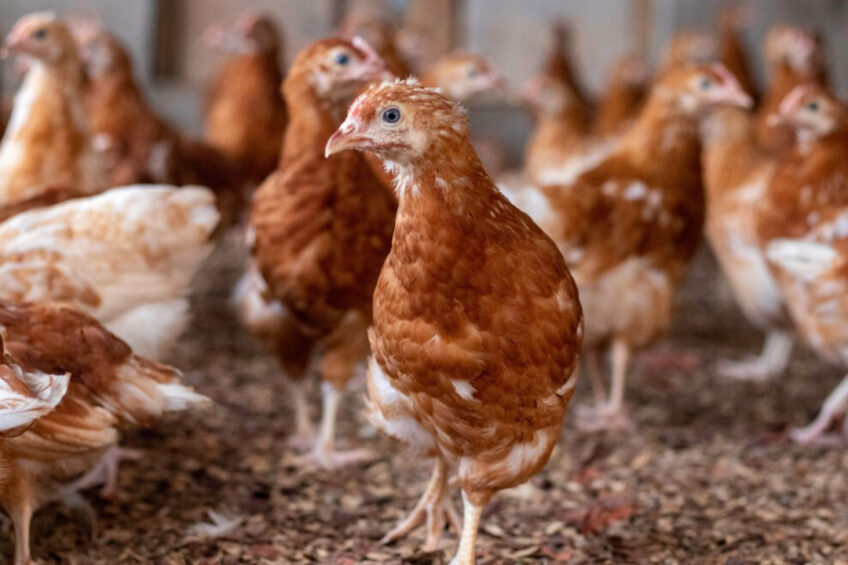Upswing in poultry production and consumption in Ghana

Domestic broiler production is estimated to meet only about 2% of total demand for chicken meat in Ghana, due primarily to the rising costs of production. But chicken meat continues to be the most popular source of animal protein in the country and an increase in production is seen.
Broiler production in Ghana
A decrease in the price of corn following the 2021 harvests has led the USDA to estimate Ghana’s domestic broiler production for MY2022 at 60,000 mt. This is a 20% increase over 2021 (50,000 mt), which was a decrease of about 14% compared to 2020 (57,000 mt).
It is interesting to note that spent layers constitute more than 90% of domestically produced chicken meat, while domestic broiler production is believed to meet only 2% of demand in the country.
High cost of production, and avian influenza
The decline in domestic broiler production in 2021 is mainly due to the rising costs of production, particularly feed costs. Another factor responsible for the decrease is the recorded incidences of highly pathogenic avian influenza, which was reported in 9 out of the 16 regions of Ghana. The first reported case of avian influenza occurred in July 2021.
January Business Update: What’s new in the world of poultry?
We’re keeping our finger on the pulse and bring you a comprehensive summary of the latest business updates from the global poultry industry this January. Read more…
Feed costs, which account for as much as 80% of the total cost of production, have seen a sharp increase over the last 2 years due shortages of corn. It has been reported that unusually high purchases of corn were made by aggregators from neighboring countries in 2020. This, combined with increased industrial demand for corn (especially by breweries) and increased demand for human consumption, pushed the price of the commodity up in 2021. Furthermore, prepared feeds recorded price increases of between 49 and 82% in 2021 compared to 2019.
Consumption of chicken meat is looking up
Chicken meat continues to be the most popular source of animal protein in Ghana with consumption per capita reaching about 13 kg in 2021, and it is forecast to reach 460,000 mt this year, which is a 15% increase over the 2021 estimates (400,000 mt). Population increase, a growing middle-class, a resurging economy, and the reopening of the hospitality sector and more freedom of movement are drivers for this upswing in chicken consumption.
Annual consumption continues to outstrip the domestic supply
Most imported chicken meat on the Ghanaian market is sold frozen, cut into various parts, and packed into 10 kg cardboard boxes. Domestically produced chickens are usually sold at 2.5 kg live birds on the Ghanaian market at an average price of GHS55. The bird can also be slaughtered at the market for an additional GHS3.
Post estimates Ghana’s MY2021 chicken meat imports at 350,000 mt, an almost 19% increase over 2020 imports (295,000 mt). Meanwhile, forecasts for chicken imports for 2022 are 400,000 mt, which represents growth of about 14% over 2021. This increase in volume of imported chicken meat reflects the widening gap between local demand and domestic supply.
Chicken meat is imported from the Netherlands, Poland, the US, Belgium and Brazil. Other exporting countries are the UK, Turkey, Germany, Canada and Ukraine. Poultry imports are regulated through a non-transparent method of import permits and an import tariff of 35% import duty. Additional taxes and levies also apply.
Figure – Percentage market share of top 5 exporters of chicken meat to Ghana
A poultry sector revamp in Ghana
Livestock production accounts for 14% of agricultural GDP in Ghana. National demand for poultry meat alone was estimated at about 400,000 mt in 2020, with local production at just about 57,871 mt. Broiler meat imports constitute over 80% of total meat imports into the country, while domestic broiler production has been identified by the government as the fastest means of reducing meat imports.
To achieve this, in 2019 the government launched the Rearing for Food and Jobs (RFJ) initiative under the theme ‘Self-Sufficiency in Meat Production – a Must’, aimed at modernising and transforming agriculture for food, jobs, and foreign exchange through the rearing of livestock such as poultry, cattle, sheep, and goats. The stated target for the poultry sector was to initially produce 40,000 mt of broiler meat (20 million birds) on a pilot basis in 2020 and scale up production. In total, 247,480 mt is expected to be produced within 5 years.
For this initiative, Ghana’s government has placed a strong focus on poultry and has, through the Agricultural Development Bank Ghana, announced a US$87 million loan facility in support of the government’s ‘“Broiler Revitalization Programme’ which aims to increase domestic production of chicken with an interest rate of below 10%. Furthermore, the initiative will benefit from a 40% subsidy from the government to attract farmers into the broiler production sub-sector. The Ministry of Food and Agriculture will subsidise the cost of 1,000 – 2,000 day-old chicks, vaccines, and feed for the first 2 weeks of production by 50%.
This article has been based on a USDA
report
.
 Beheer
Beheer











 WP Admin
WP Admin  Bewerk bericht
Bewerk bericht